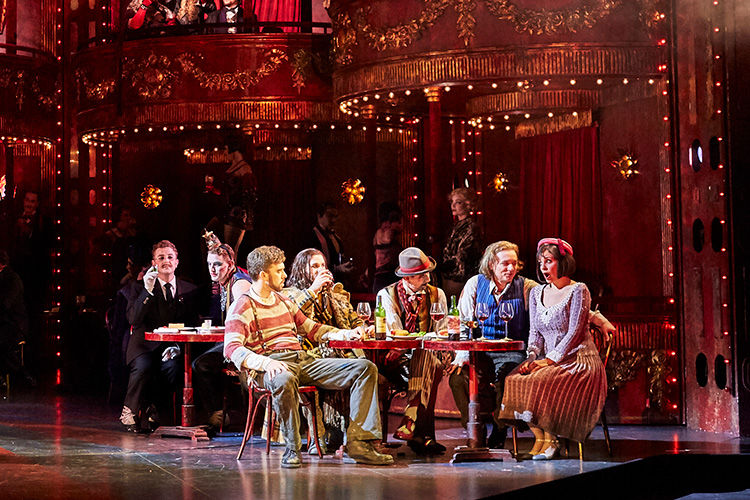Review: La Boheme at the Sydney Opera House
- Theatre Travels

- Sep 3, 2025
- 3 min read
Review by Alexa Hafner Keelan
Fall into a 1830’s love story told through a bohemian lens of 1929 Berlin that enchants and plays on your emotions. Set in Berlin, this tragic love story unfolds, embodying the music of Giacomo Puccini (one of the most famous opera composers of all time) into a captivating two hours and fifteen minutes. Giacomo Puccini is a well-known Italian composer known for his beautiful melodies about ordinary people, and is most famous for Madama Butterfly, Tosca and Turandot.
Perhaps you might have heard of La Boheme through movies such as Moonstruck (1987) starring Cher, and Moulin Rouge (2001) to which Baz Luhrmann based the plot on. Even musicals/operas such as Rent, to which it is based on and La Traviata also share startling resemblances. The director, Gale Edwards brings this performance to life, this time in a different setting (Berlin), which still enchants and brings the timeless heartache love story with a unique twist.
The story encompasses tragedy, love, hope, and jealousy playing upon the full range of human emotions. It centres around the theme of poverty as struggling artists known as bohemians are left to the edges of society, finding happiness in their passions. They break away from the traditional norms of society and find connection with each other through their artistic endeavours.
Mimi, played by Olivia Cranwell and Rodolfo, played by Kang Wang, star as the leads of the opera. They masterfully capture the emotion required for the role. Cranwell captured her enduring passion for Rodolfo by her vocal sway and sensitivity while Wang captured his longing and jealousy for Mimi with his powerful vocals displayed through the crescendos. The highlights of the night are shared in the moments where the two voices interact, complementing each other's vocal tone.
The orchestra was led by the incredible Erina Yashima, who has worked worldwide with repertoire spanning across ensembles, opera companies, and orchestras. She expertly led the orchestra, keeping the music delicate and sensitive to the emotional tone of the scene, bringing the emotions to life in each act.
Musetta’s famous waltz, Quando me'n vo was a well-defined highlight of the evening, often played in movies and advertisements. Musetta, played by Rachelle Durkin, gave a glamorous performance encapsulating her desire to reconnect with her former lover. The spotlight in this scene was on her, and it was a beautiful performance that dazzled, and no doubt maintained the audience’s attention.
The lighting worked well at capturing the mood of the performance, easily capturing the atmosphere of the scene. Despite the cold grey attic feel of the first act, the lighting was beneficial in creating warmth demonstrating the glimmer of happiness the bohemians share with each other. John Rayment skilfully made use of the many angles of the stage, carefully taking into account the silhouettes, positions of props and the emotional themes.
The set design spoke volumes and allowed the story to flourish, where the bohemian’s attic room scenes contrasted with the glitz and glamour of the Berlin club. The set designer Brian Thomson captured the vibrant Berlin nightlife very well, incorporating colours and lights to contrast from previous scenes. Thomson’s choice of set design helped enhance the impoverished lifestyle of the bohemians in the opera, where some scenes were dull and grey with minimal props. This can be compared to later scenes where colours are rich and props are abundant. Thompson made beautiful use of snow appearing throughout many scenes often behind glass windows and doors adding to the reality and romance of Berlin in the wintertime.
Julie Lynch’s costumes effectively capture the peak of a German winter with the use of coats and layers, scarves and shawls. Patterns and frills were at the centre stage with costumes that were eye-catching and embracing of the bohemian style. Every piece of clothing chosen was thoughtful and interesting, bringing together different colours, patterns and styles into play. A standout costume was Musetta’s sparkling gown that she used to attract her previous lover. Lights were shining on the costume, letting it shimmer from every angle.
Emotions were heightened throughout the performance, ultimately leading up to the tragic ending of Mimi. Despite the sadness, it was clear that the audience was delighted by the performance displayed by their enthusiastic applause. An unforgettable night brimming with all the enchantments opera has to offer.





